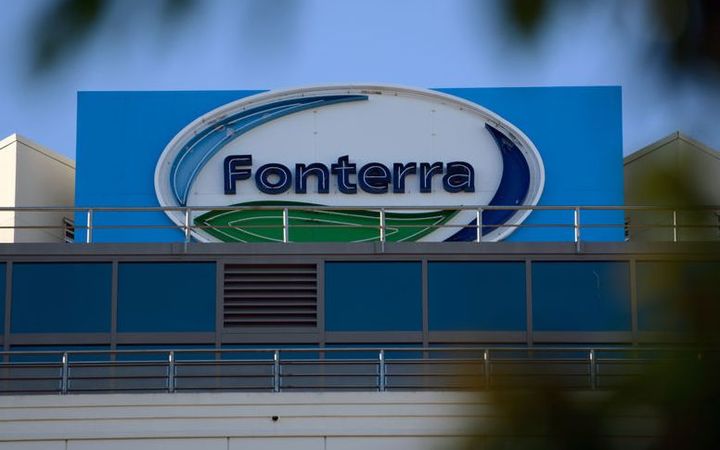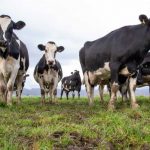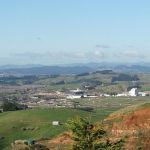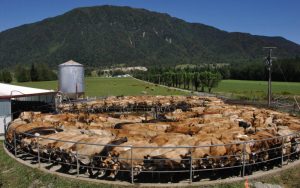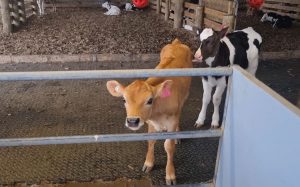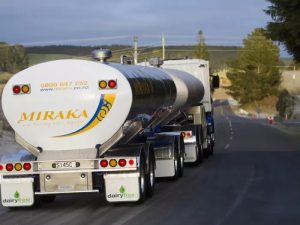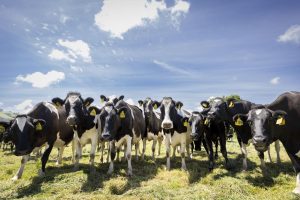
Peter Fraser traces the events leading up to the surprise decision and considers whether there is more to it than meets the eye.
For Fonterra, September 12 2019 mattered. It was the day its much-anticipated and well signposted end-of-year financial results were scheduled to be released.
The issue was simple. In recent times nothing has gone Fonterra’s way, and as a result the organisation has found itself in the headlines for all the wrong reasons (see here, here, here, here, here, here, here, here, here, here, here, here, and here. And here and here. And here too. And don’t forget here and here.)
New Zealand’s largest business needs to hit the reset button, and end-of-year financial reporting affords the perfect opportunity – allowing the pain of the recent past to be exorcised, and clearing a path towards a better tomorrow.
A key plank in leaving the past behind is the need for Fonterra to reveal the whole truth about its fiscal status. Exactly one month before its scheduled September 12 big reveal the co-op had what I have dubbed its ‘bring out the dead day’. On August 12 it dropped almost a cemetery’s worth of skeletons, with a projected operating loss of up to $675 million in 2019/20 (this was care of $850 million of additional asset write downs) at the top of the list. This was closely followed by its failure to achieve a promised $800 million in asset sales (critically needed to repay spiralling debt), and the cancellation of its annual dividend (with negative implications for its unit price and by extension Fonterra’s market value).
But sometimes stuff is what it is – and in Fonterra’s case, the ‘is’ just happened to be extraordinarily bad.
It is hardly surprising that Fonterra’s more significant shareholders were soon in open revolt. The largest is Colin Armer, an ex-Fonterra director and current director of Dairy Holdings. Enraged with the board’s handling of the situation, he laid a complaint with the Financial Markets Authority.
The second biggest shareholder is Landcorp, trading as Pāmu, with Shane Jones as its responsible minister. Jones has strongly held views on the embattled company and is typically very generous in sharing them – this time flying a kite pondering whether governance is an issue that needs to be covered in the legislation regulating Fonterra.
Farmers on the other hand appeared simply stunned – again, hardly surprising since they have seen over $5.5 billion of their money go up in smoke since January 2018 and over $1.5 billion of that in the past three months.
While 2017/18 had been an annus horribilis, 2018/19 was suddenly looking even worse. However, a bi-annus horribilis may have been almost acceptable as long as 2019/20 was shaping up to be an annus mirabilis (a wonderful year). All this hinged on no additional skeletons lurking in any long-forgotten closets, plus a stonker of a milk price.
So the big question is, have all of Fonterra’s ‘dead’ been bought out, or is there still more to come?
I argued more was to come, citing the potential for further write downs on its ill-fated Chinese investments Beingmate ($100m) and China Farms ($300m). Meanwhile, agribusiness expert Keith Woodford also highlighted the perilous state of Fonterra’s Australian and Chilean businesses, concluding further write downs were likely in both.
For Fonterra the spectre of yet further write downs is simply too awful to contemplate. In addition to raising questions about managerial credibility, the following problems quickly emerge:
- Fonterra could record a third straight financial loss, meaning an annus mirabilis suddenly turns into a tri-annus horribilis
- Given a prospective 2019/20 operating loss, it implies Fonterra is unlikely to pay a dividend for a second straight year, which risks sending its units (and therefore its share price) back into freefall
- Its debt (and in particular its gearing), which is already extremely high, gets even worse
- There is a heightened risk of Fonterra breaching some if not all of its banking covenants
- It questions the credibility of Fonterra’s asset sales programme – especially if big ticket items like Soprole are not sold at ‘book or better’ value, leading to more fundamental asset valuation questions
- Fonterra’s ability to operate as a going concern increasingly starts to come into question.
So, if 12 August was Bad News Day then 12 September was widely anticipated as needing to be a ‘Better News Day’.
Then at 8.30 on Friday 6 September, Fonterra dropped another bombshell: A statement to the NZX stating it was deferring its annual reporting date to “no later than 30 September”, citing the need for “significant accounting adjustments”.
Given all of the above, Fonterra’s decision to cancel its big day less than a week out is seemingly inexplicable. For market commentators and watchers it was akin to being invited to a wedding but receiving a text the night before saying the nuptials had been called off – but to wait for further updates.
One can safely surmise it’s not an auspicious sign.
Maybe it means nothing. Fonterra is a big company and the scale of the asset write downs identified are significant, so perhaps the board and/or its auditors are simply being ultra-cautious and need more time.
The problems with this argument are twofold: Fonterra has had plenty of time, and as an organisation it has a reputation of being less than forthcoming – it hasn’t earned the moniker ‘Fortress Fonterra’ without good reason.
Fonterra’s decision occurred within 24 hours of ANZ releasing its Dairy Industry Update. The update was another bombshell: ANZ argues Fonterra faces up to $700 million of additional balance sheet write downs and may have to abandon the milk price manual this season.
Wow. That is one hell of an update.
The question here is not whether the two events (ANZ’s update and Fonterra’s postponement) are related or not, but why New Zealand’s biggest bank decided to throw the country’s biggest company (and a corporate client) under a tanker? It brings matters into perspective, because this decision is unlikely to have been made by some mobile mortgage manager operating out of Morrinsville.
Let’s park that for now and look at whether there are other reasons why Fonterra would call for timeout. The most obvious explanation is that there is a significant difference in views regarding asset values between the auditors and management and/or the auditors and board. This is suddenly where things get very untidy.
PwC have been Fonterra’s auditors for the past 18 years. In a post-Enron world this is hardly a shining example of best auditing practice. Indeed, to stop an overly cosy relationship developing between a company and its auditor the EU requires that audit firms are changed every five to seven years. In New Zealand, with relatively few firms, partner rotation to provide a fresh set of eyes every few years is acceptable. However, 18 years is a very long time even for that.
As it happens 2018/19 will be PwC’s last hurrah, with KPMG due to replace the firm in 2019/20. This creates a rather unique dynamic. To protect its reputation PwC has strong incentives to leave no stone unturned. Meanwhile as incoming auditor KPMG has a strong incentive to do the same, for exactly the same reasons. Critically, PwC understands this.
This brings us back to the $700 million of potential write downs identified by ANZ.
Three of the assets, Beingmate, China Farms and the Australian business, were already written down as part of the $850 million of impairments identified on August 12. The question is whether these are sufficient. In all three cases good arguments can be made they are not, potentially resulting in a tense conversation between PwC and the board.
The fourth asset is Soprole, Fonterra’s Chilean business. Soprole has not been tackled – yet. However, a modicum of analysis suggests its book value is overstated. This begs the question: Why was Soprole’s value not written down at the same time Fonterra’s two other Latin American businesses (DPA and Venezuela) were, and also included in the August 12 package?
Another aspect to Fonterra’s situation is that it has payout subordination, which means the banks can demand payment from its sales revenues before the company pays itself or its farmers. This gives the banks significant confidence. If subordination happens, Fonterra must abandon its milk price manual and retain earnings (as has been argued for here, here, here and here – and steadfastly rejected by Fonterra CFO Marc Rivers and Fonterra Shareholders Council Chair Duncan Coull).
Payout subordination raises the closely related issue of Fonterra’s credit rating, as without it Fonterra would not be able to sustain the level of debt it currently has without spiralling into junk bond territory.
In this respect, recent comments from ratings agency Standard and Poors are interesting. Like ANZ, Standard and Poors notes Fonterra is able to reduce the milk cheque paid to farmers – and further notes Fonterra has done so on two previous occasions.
A point worth noting is the Australian-owned banks have been trying to reduce their exposure to New Zealand agriculture, and as a result have been demanding principle repayments from farmers. As New Zealand’s largest bank ANZ is also likely to have the largest dairy industry exposure. It is therefore not a huge leap of logic to suppose, given the machinations that have engulfed Fonterra for the past year, that maybe ANZ would like to see some principal repayments from Fonterra too.
Which brings us to Fonterra’s rescheduled release of its annual financial statements. What can we expect on the revised date of September 26, this Thursday?
This is my wish list:
- Immediate retentions in 2019/20 to go towards debt repayment
- Confirmation whether there are any more write downs as this will determine if there is a dividend in 2019/20
- An update on asset sales and an indication of prospective process and milestones
- A commitment – along with a credible pathway – to substantially reduce debt
- A strategy that not only makes sense, but is funded and has a capital structure that is fit for purpose
- An acknowledgement from Fonterra that its milk supply is likely to decline and a strategy to manage too many plants chasing too little milk – especially in the South Island
- A sensible conversation regarding its milk price-setting mechanism.
What will be disappointing is if Fonterra continues to bluster and primarily focuses on slashing capital and operating expenditure without executing a comprehensive package of changes.
All will be revealed on September 26 – so put a ring around the date, pull up an easy chair, and buy some popcorn. It is going to be a great show.
